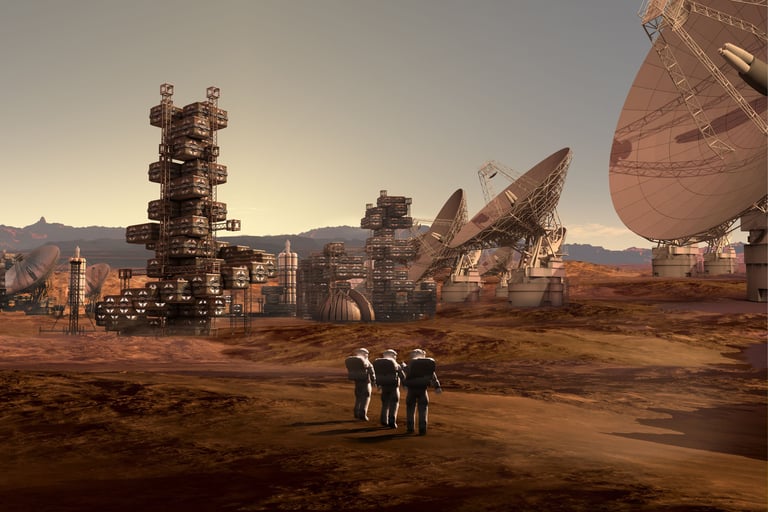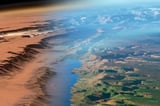Scientists Propose Metal Nanorods to Terraform Mars, Potentially Boosting Habitability
August 7, 2024
Scientists are exploring a novel method to thicken Mars' atmosphere and potentially terraform the planet, as detailed in a recent study published in Science Advances.
The proposed method involves using tiny metal nanorods, which could help trap heat on Mars and melt frozen water, moving the planet closer to habitability.
Releasing these glitter-sized rods into Mars's atmosphere could warm the planet enough to create conditions suitable for life.
These 9-micrometer-long nanorods, made from iron and aluminum found on Mars, would remain in the atmosphere significantly longer than natural dust particles.
The rods could be lifted into the upper atmosphere by wind, where they would trap heat while allowing sunlight to pass through.
Previous suggestions for warming Mars, such as installing mirrors or pumping methane, are complicated due to the need to transport materials from Earth.
This method of warming Mars is 5000 times more efficient than previously proposed techniques involving engineered greenhouse gases.
Research led by Edwin Kite at the University of Chicago suggests that dust clouds made from these rods could raise Mars's temperature by about 30°C within months to a decade, depending on the release speed.
Over ten years, the proposed method could increase Mars' atmospheric pressure by approximately 20%, with potential long-term increases as polar CO2 ice volatilizes.
Modeling and climate simulations indicate that this warming could sustain liquid water and possibly oxygen-producing bacteria on parts of Mars.
However, the researchers caution that this warming method alone would not make Mars habitable for humans or oxygenic life.
Experts express caution regarding the ethical implications of altering another planet's atmosphere, given our limited understanding of Mars's surface and ecosystem.
Summary based on 2 sources
Get a daily email with more Science stories
Sources

Newsweek • Aug 7, 2024
Mars Terraforming Could Start By Warming Planet With Tiny Rods
New Scientist • Aug 7, 2024
We could use glitter-like iron rods to help Mars support life